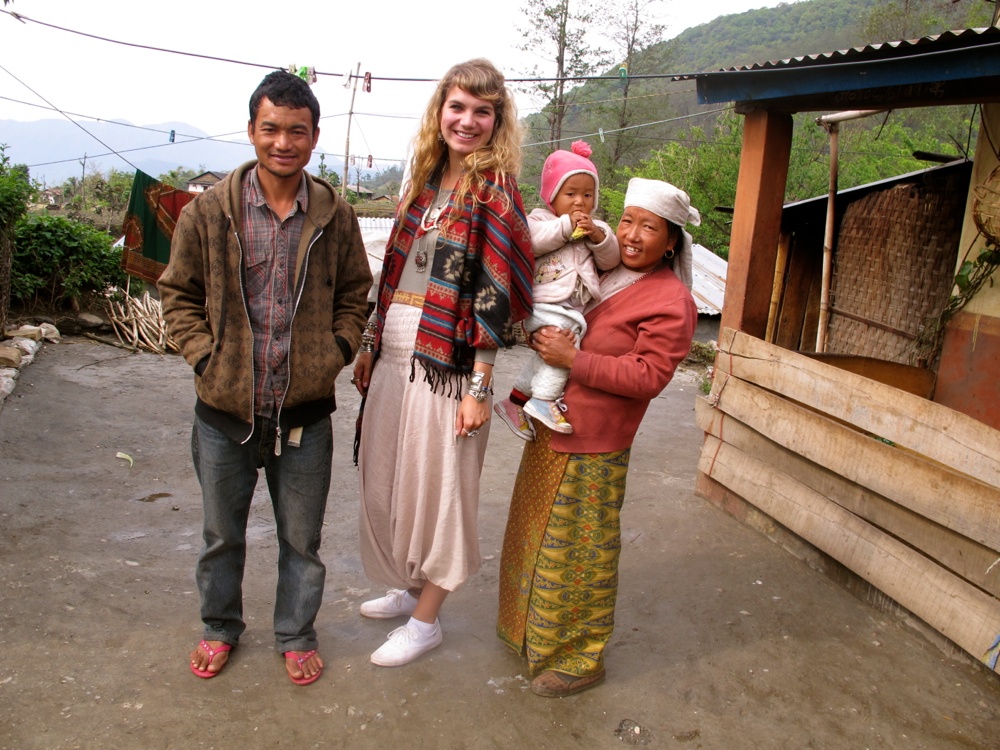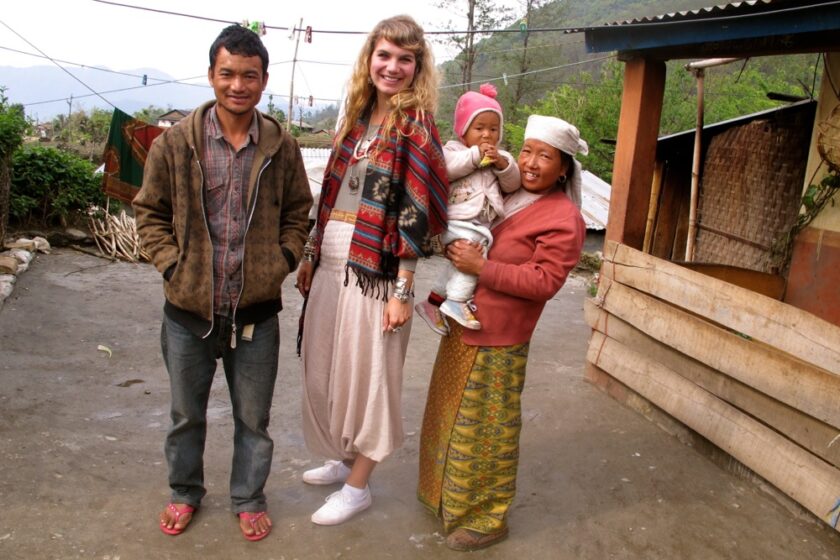Planning a trip to Nepal and unsure of what to pack? Look no further! Our complete guide to what to wear in Nepal has got you covered.
From trekking in the Himalayas to exploring the vibrant streets of Kathmandu, we’ll provide you with all the essential tips and recommendations for dressing comfortably and appropriately in this culturally rich country.
So, whether you’re an adventure enthusiast or a cultural explorer, read on to make sure you’re dressed for success on your Nepalese adventure.
What to Wear in Nepal: A Complete Guide
Nepal is a land of breathtaking landscapes, rich culture, and diverse wildlife. Whether you are planning a trekking adventure in the Himalayas, exploring the vibrant streets of Kathmandu, or visiting the sacred temples and monasteries, it is important to dress appropriately to show respect for the local culture and customs, as well as to stay comfortable in the varying weather conditions. This comprehensive guide will help you navigate the different clothing requirements for various activities and locations in Nepal.
General Considerations
Before diving into the specific clothing recommendations for different settings in Nepal, there are some general considerations to keep in mind. It is advisable to dress modestly throughout your stay in Nepal, as the culture values modesty and conservative dressing. Lightweight and breathable fabrics are a must, as Nepal experiences a wide range of temperatures, from hot and humid in the lowlands to cold and freezing in the high altitudes. Layering is key, as it allows you to adjust your clothing according to the changing weather conditions. Additionally, remember to pack some good quality insect repellent, as mosquitoes can be prevalent in certain areas.
Clothing for Trekking
Nepal is renowned for its incredible trekking opportunities, attracting adventurers from all around the world. Whether you are embarking on a short hike or a multi-day expedition, it is crucial to have the appropriate clothing to ensure your comfort and safety. The most important item for trekking in Nepal is a good quality pair of hiking boots. These should be sturdy, waterproof, and have excellent traction to navigate the rugged terrains. Additionally, opt for breathable and moisture-wicking clothing such as synthetic or merino wool base layers, trekking pants, and a lightweight waterproof jacket to protect yourself from unexpected rain showers. Don’t forget to pack warm layers such as fleeces and down jackets for the colder evenings at higher altitudes.

Clothing for Urban Areas
When exploring the bustling cities of Nepal, such as Kathmandu or Pokhara, it is appropriate to dress more casually. Comfortable and breathable clothing such as cotton or linen shirts, tops, and trousers are ideal for navigating the busy streets and markets. As Nepal is a conservative country, it is best to avoid wearing revealing or tight-fitting clothing that may be deemed inappropriate. It is also advisable to carry a lightweight scarf or shawl to cover your shoulders when visiting religious sites or entering traditional establishments.
Clothing for Religious Sites
Nepal is a deeply spiritual country, with numerous temples, monasteries, and sacred sites scattered across its landscape. When visiting these religious sites, it is important to dress respectfully and modestly. Both men and women should cover their knees and shoulders, and it is best to avoid wearing revealing clothing or shorts. Loose-fitting tops, long skirts, or trousers made of lightweight and breathable fabrics are suitable options. Additionally, remember to remove your shoes when entering temples or monasteries, as a sign of respect.
Clothing for Wildlife Safari
Nepal is home to a diverse range of wildlife, from the majestic Bengal Tiger to the endangered one-horned rhinoceros. If you are planning a wildlife safari in Chitwan National Park or Bardia National Park, make sure to pack appropriate clothing for the adventure. Opt for neutral-colored, lightweight, and breathable clothing that will help you blend into the natural surroundings and protect you from insects and the sun. Long-sleeved shirts, trousers, and a wide-brimmed hat are essential items to consider, along with comfortable closed-toe shoes suitable for walking on uneven terrain.
Essential Gear for Outdoor Activities
In addition to clothing, there are a few essential gear items that can greatly enhance your outdoor activities in Nepal. A sturdy and comfortable backpack is essential for carrying your water, snacks, extra layers, and other personal items. A good quality daypack with adjustable straps is recommended for shorter hikes, while a larger backpack designed for multi-day treks is necessary for longer expeditions. It is also advisable to bring a waterproof cover for your backpack to protect your belongings from unexpected rain showers.
Footwear
Choosing the right footwear is crucial for your comfort and safety in Nepal. Apart from the hiking boots mentioned earlier for trekking, it is advisable to bring a pair of comfortable walking shoes or sandals for urban exploration and less-demanding activities. These should provide good arch support and cushioning for long hours of walking. Additionally, a pair of flip-flops or lightweight slip-on shoes will come in handy for relaxing at your accommodation or visiting communal showers.
Accessories
Certain accessories can greatly enhance your experience in Nepal. A wide-brimmed hat or a cap is essential for protecting yourself from the strong sun, especially at higher altitudes where the UV rays are stronger. Sunglasses with UV protection are also highly recommended. Don’t forget to pack a good quality travel towel, as some accommodations may not provide towels or charge extra for them. Finally, a reusable water bottle and a water purification system or tablets are essential for staying hydrated and reducing plastic waste.
Cultural Etiquette
Respecting the local culture and customs is of utmost importance when traveling in Nepal. It is customary to greet locals with a ‘Namaste’ and a slight bow, instead of a handshake. Always ask for permission before taking photographs of people, especially in rural areas where they may hold strong cultural beliefs. Remember to dress modestly and cover your shoulders and knees when entering religious sites or remote villages. Refrain from displaying public affection, as it is considered inappropriate in the Nepali culture. Showing respect and understanding for the local customs will help you have a more meaningful and enjoyable experience in the country.
Weather Considerations
Nepal experiences diverse weather conditions throughout the year, so it is important to plan your clothing accordingly. In the lowlands and urban areas, such as Kathmandu and Pokhara, the summers can be hot and humid, while winters are mild and pleasant.
Lightweight and breathable clothing, such as cotton and linen, are ideal for these regions during the warmer months, while packing a light sweater or jacket is advisable for the cooler evenings. In the high altitudes and during the trekking seasons, the weather can be unpredictable. Layers are essential to adjust to the changing temperatures, from warm base layers during the day to insulated jackets and fleeces for the evenings. Don’t forget to bring a waterproof and windproof outer layer to protect yourself from unexpected rain or snow showers.
By following this comprehensive guide on what to wear in Nepal, you will not only be able to navigate different settings comfortably but also show respect for the local culture and customs. Whether you are embarking on a thrilling trek, exploring the bustling cities, visiting religious sites, or venturing into the wildlife reserves, dressing appropriately will enhance your overall experience in this mesmerizing Himalayan country. Prepare your wardrobe wisely and get ready for an unforgettable adventure in Nepal.

